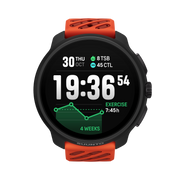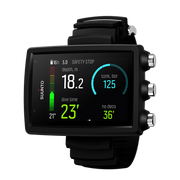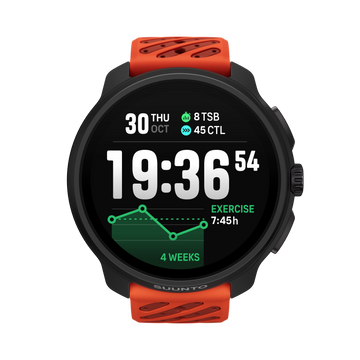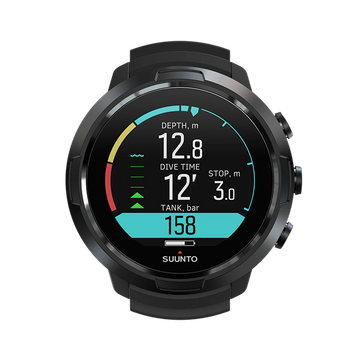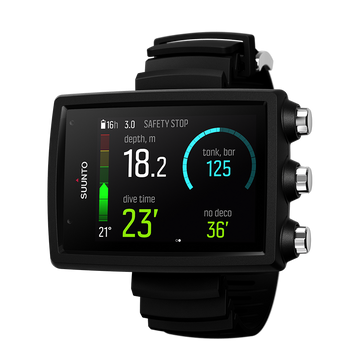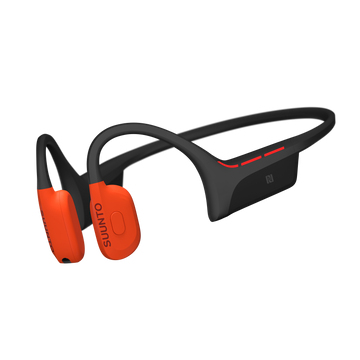

Suunto Blog
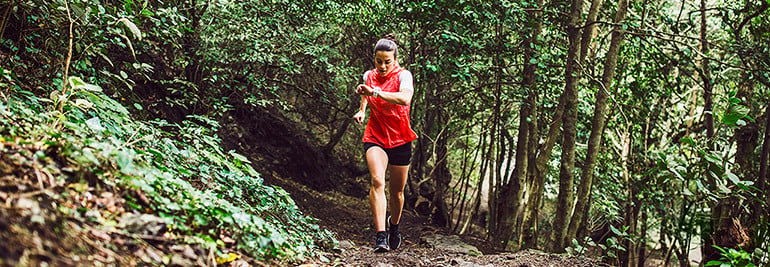
3 Things You Need to Do Before Setting Your Next Race Goal
In the 1960s, Stanford professor Walter Mischel set out to do an experiment. He tested hundreds of 4 to 5-year-olds on what turned out to be a key component to future success in work, health and life. Researchers brought each subject (a 4 or 5-year-old kid) into a private room and set a single marshmallow down on the table directly in front of them. The researcher then let the child know that they were going leave the room and if they didn’t eat the marshmallow sitting in front of them, they would get another marshmallow when the researcher came back into the room. The researcher then left the room for 15 minutes to let them decide: one marshmallow now or two marshmallows later?
DELAYED GRATIFICATION
In the past couple years you’ve probably noticed an inordinate amount of articles, podcasts, and TED Talks on the topic of happiness and life satisfaction. When people talk about being “happy,” there two different aspects to this concept.
There is happiness that we find on a daily basis through joyful activities, and then there is the happiness we find in having a greater meaning in our life that contributes to overall life satisfaction. There is feeling happiness in your life and then there’s feeling happiness about your life.
Happiness about your life sometimes includes going after bigger goals. Pushing yourself to see what you’re truly capable of. Working toward something that brings you both joy (because you enjoyed the pursuit) and satisfaction (because you had to work hard to get it). At some point when you go after a big goal you will be required to trade the immediate perceived reward right now for the bigger reward down the road. Big goals can mean big sacrifices; like not eating the marshmallow sitting in front of you.
If you’ve ever had an unfinished goal, you know how frustrating and heartbreaking it can be. You were on the path to your goal, took an unexpected side trip, and never found the road leading back to it.
What athletes don’t always know is that when they don’t accomplish a goal, they didn’t necessarily fail at the goal—they more likely failed at their goal-setting strategy. Here are three essential and research-proven goal-setting techniques for delaying gratification and holding out for the bigger reward:
HAVE A PLAN
You need to know exactly what you want and exactly how you’re going to get it. It’s worth putting in the time to formalize your goal and get specific with your strategy. The more specific you are with your vision and your plan, the more likely you are to take action on it.
WRITE IT DOWN AND SHARE IT WITH FRIENDS
Athletes who do these two things increase the probability of actually accomplishing their goals. Telling people about your goal and writing it down are added accountability factors that can increase the likelihood that you will follow through with your goals.
KNOW YOUR WHY
Why this goal and why now?
Why is this important to you?
How does this goal connect to your values and the person you want to be?
When you think to yourself “I don’t know if I can do it today” and you’re trying to find your motivation, connecting to your why can be a powerful reminder of what’s really important to you and helps you make a decision from that place. It helps you hold out for two marshmallows.
And speaking of marshmallows—you might be wondering what the kids did when the researcher left the room:
Some kids had no problem at all waiting patiently for their second marshmallow. Others immediately grabbed the marshmallow and shoved it in their mouths. And then some of the kids came up with strategies like covering their eyes and sitting on their hands to try and hold out for the bigger reward.
What’s really fascinating are the follow-up studies. Over the course of 40 years after the initial experiment, some interesting differences emerged between the children who were able to delay gratification and choose two marshmallows later versus the children who chose one marshmallow immediately.
The research from this study and subsequent studies on delayed gratification are pretty clear; the ability to delay immediate gratification is essential for success. You set goals to fulfill dreams, to move from wishing something would happen to making it happen. And when you are truly committed to your goal, there is no amount of marshmallows that will derail you. You know that the bigger reward is waiting for you down the road.
This article by Carrie Jackson Cheadle, a professor of sport psychology and expert in Mental Skills Training, was originally published on trainingpeaks.com.
TrainingPeaks provides you in-depth analysis, planning tools and coaching services to help you reach your goal. Track your workouts with your Suunto watch. Afterwards analyze your heart rate, power, pace and other data with TrainingPeaks on web or in mobile and progress towards your goals.

Take the Long Look: How to Plan (Very) Far Ahead in Order to Reach Your Goals
Flying home from the World Masters Championships in Germany some years ago, trapped in a tight seat, surrounded by strangers, I began to think about my next important race—not my next race, but my next important race—one I hoped to win. It was the marathon at the next Worlds in New Zealand, which was still another year and a half away.
If you want to succeed as a long distance runner, you need to take the long look.
By any measure, I had achieved success in Germany, winning bronze and silver medals, but that was less than at the two previous Worlds, when I took home the gold. The bigger problem was that in New Zealand, because of my birthday, I would fall five months short of moving from the M45 age division into M50—which would presumably have easier competition. Almost all my rivals were younger than me—youngsters who had just moved into the division and were ready to take down the old coot. To match my previous record, I would need to train much harder and, more importantly, much smarter.
So I pulled out a sheet of paper and began to plot my training for the next 18 months.
Other than at the elite level where runners look from one Olympic Games to the next, I suspect this is something that few runners do—but maybe they should. Consider the following suggestions as you map your training for the coming year:
1. Plan Far, Far Ahead
Not far ahead, but far, far ahead. Not weeks ahead, or months ahead, but years ahead. What activities should you be doing now to enhance the quality of your life all the way to the end of that life? Today, running sits at the center of your universe, but look to the future. Running scores high when it comes to cardiovascular benefits. Our sport is also a great (not merely good) tool for maintaining weight and strengthening the lower body—but what else should you be doing?
While still in my 20s, I began supplementing my workouts by lifting free weights. Few runners strength-trained back then, but I was thinking ahead. Later, I added cross-country skiing, snowshoeing and even competed in triathlons, adding swimming and cycling to my workout routine. In planning far, far ahead, you should seek total fitness—not just running fitness.
2. Plan Far Ahead
The time for New Year’s resolutions slid past us, but you still can make a running resolution. What will be the theme of your running for the calendar year; not just which specific races, but the motivation leading to those races? Perhaps it is time to get serious about the sport and train extra hard, perhaps aiming for some PRs (Personal Records) or that coveted BQ (Boston Qualifying Time) that has eluded you during your running career.
Or, perhaps you are burned out from the training it took to reach previous goals. Don’t just stop running, but maybe realize that it’s time to cut back on both the quantity and quality of your workouts to refresh yourself psychologically for the next big push.
College-age students often do something similar which they refer to as a “gap year.” They get a job, earn some money, sometimes travel, and, after a break—return to college or to graduate school. After that Worlds in New Zealand, I not only grabbed gold in the marathon, but I also scored a bonus bronze medal in the 10,000 meters. Then, I returned home and did not run a step for two months (I cross-country skied instead).
3. Plan Ahead
Goal-setting (as suggested above in steps one and two) has provided you with a theme for the full year. What about the smaller increments of that year? Often a major race, such as a marathon, attracts our attention. But while having a single major goal for the year, you can also have interim goals. For example, a half marathon or two in the spring leading up to a full marathon in the fall. My half marathon training programs last 12 weeks; my marathon programs, 18 weeks. That allows for several training cycles.
Both my Novice Supreme and Personal Best training plans combine 12- and 18-week programs for a total of 30 weeks.This permits a gentler ramp-up in mileage and—although I can’t offer any research studies to prove it—decreases the risk of illness and injury that comes with overtraining.
When it comes time to achieve success as a runner, proper planning should rate high on your list. Plan ahead. In fact, plan very, very far ahead.
This article by Hal Higdon was originally published on trainingpeaks.com. TrainingPeaks provides you in-depth analysis, planning tools and coaching services to help you reach your goal. Track your workouts with your Suunto watch. Afterwards analyze your heart rate, power, pace and other data with TrainingPeaks on web or in mobile and progress towards your goals.
When you buy a new Suunto watch and connect it with TrainingPeaks via Suunto app you get 30 days of TrainingPeaks Premium and a Suunto training program for free! Learn more.

Calling all the sporty ladies! Emelie Forsberg smashes four records for women everywhere
This year 32-year-old mountain running champion Emelie Forsberg has done things differently. Rather than focus solely on racing, she turned her attention to challenging personal projects, resulting in her smashing four fastest known time records (FKTs) in a row.
Emelie tracked her Kungsleden FKT with her Suunto 9: She ran about 90km per day for five days straight. (Image by Philipp Reiter)
It all started because Forsberg noticed a dearth of women’s names in the record books for FKTs, and decided to give her own effort to improve that, hoping to inspire other women everywhere to take on fun, personal challenges – big or small – and achieve their dreams. The results are impressive.
“There are very few women who are doing these kinds of things in the mountains, and if I can inspire more to do it, why not?!” she says.
Click play on the Four in a Row video below to watch the action from Emelie’s awesome four FKTs, including new fastest ascent times, and a new record on a long distance trail. Please then all you sporty ladies, head over to her Instagram feed and give her a shout out for her efforts!
Watch Emelie's "4 in a Row" mini-documentary now!
Images by Philipp Reiter

Rickey Gates runs #EverySingleStreet in San Francisco
Gates finished on a rainy day. He ran all the streets in the background. © Dean Leslie / Wandering Fever
After racing in some of the world’s toughest ultras, and running across the United States last year, Rickey Gates expected his #EverySingleStreet project to be long, but light work.
Turns out he hadn’t fully thought through all the vertical gain involved, which amounted to the equivalent of climbing Mount Everest five times. That combined with the distance and complex mapping logistics made it far tougher than he expected.
“It’s ironic, I grew up in the mountains, spent a lot of my life running in the mountains, but the greatest amount of vertical gain I’ve done for one thing has been here in San Francisco,” Gates says. “This project was truly something else!”
© Liz Thorp
Since he started his #EverySingleStreet project, and sent out an invitation on his Instagram feed for others to do the same, runners around the world have heard the call and followed suit. Runners in Germany, Canada, Alaska, Thailand, Finland and elsewhere are running all the streets in their cities, towns and villages.
“It’s really great to see other people take on the challenge,”Gates says. “It seems to offer a different element to some people’s training. For others, having a goal of seeing a map fill in and knowing that you ‘know’ a place on a certain level is empowering.”
In the coming days, Gates will be selecting one of the people running their local streets and giving them his Suunto 9 watch to reward their effort. There will be other giveaways from Salomon.
One of the things Gates enjoyed the most about the project was finding ways to keep himself entertained as he crisscrossed the city. Spotting cats, funny old cars, and graffiti kept him amused. “Doing this makes me more present,” Gates says. “It’s the city equivalent of noting tree or bird species when you’re out in the mountains.”
He also enjoyed connecting with some of the locals he passed each day. “It’s nice to say hi and smile at strangers and to see how far it gets you to know people,” he says.
Lead image: Photo by Gordon Mak on Unsplash

How to customize sport modes with Suunto app
Ultra-runner Francois D’haene wants to keep his sport modes simple.
“To be able to personalize my watch is very important for me,” Francois D’haene says.
On his trail running training sessions from home Francois likes to follow altitude, ascent and duration. For interval sessions he adds a screen with a lap table. In an ultra-race another key metric for Francois is distance.
“I don’t want to have 100 things [on my watch screen], I just want to have some important metrics.”
In ultra races duration, distance and ascent are key metrics for Francois.
Despite being first and foremost a runner, Francois also rides bikes and skis. In cycling, especially on the road, he also wants to see his speed and average speed.
When planning a sport mode for ski touring Francois highlights the importance of navigation: He includes a screen with the breadcrumb trail in his ski touring sport mode and usually plans an actual route. These add safety especially in poor weather and in white-out conditions.
LEARN HOW TO CREATE CUSTOM SPORT MODES WITH SUUNTO APP
With dozens of pre-installed sport modes Suunto multisport watches are ready to go for nearly any activity. However, should you prefer something different you can create more sport modes – and you are not limited to just one per activity type. This is useful if you want to see different metrics during a race, an interval workout and a long run, for example.
Learn how to create a sport mode on the iOS version of Suunto app
Learn how to create a sport mode on the Android version of Suunto app
GET SUUNTO APP
If you don’t use Suunto app yet, you can learn more and download it here. With the app you can customize sport modes and more on Suunto 9, Suunto 3 Fitness and Suunto Spartan watches.
KEEP YOUR SUUNTO WATCH UPDATED
For best performance, ensure that you have the latest software installed in your Suunto 9, Suunto 3 Fitness or Suunto Spartan watch: open SuuntoLink on your computer and connect your watch to your computer with its USB cable. SuuntoLink will prompt for an update if one is available.
Images © Damien Rosso / DROZ Photo

D.I.E.T (disaster imminent every time?), and three unchanging principles of nutrition for athletes
What’s the difference between eating healthy and eating right? For athlete, entrepreneur, coach and nutrition expert Dr. Rick Kattouf II this question cuts right to the heart of the debate on nutrition.
“There is a huge difference between eating healthy and eating right,” Kattouf says. “There is a huge difference between feeding the body and fuelling the body. I tell people to stop eating healthy, and they freak out.”
Rick has designed his own line of nutritional supplements. © Rick Kattouf
An example of what Kattouf calls a healthy meal is grilled chicken on a bed of greens, or a bowl of vegetables, beans with a little tofu. While Kattouf agrees these meals are healthy, he says that doesn’t make them right. Eating right is another matter.
Kattouf has credentials to back up his perspective on nutrition for athletes: during four years of pre medicine study and four years of studying optometry he learned about human physiology, pharmacology and biochemistry. The three-time age group national duathlon champion and all-round fitness freak has the performance experience to back up his approach, too.
“There’s a lot of people out there chasing one diet after the next, and one thing I am is an anti diet guy,” Kattouf says. “I trademarked the acronym for the word diet: disaster imminent every time®. That’s what a diet is. My nutrition principles haven’t changed since I was at college. And now I’m 47. Reason being is that human physiology is human physiology.”
Rick Kattouf’s unchanging principles of nutrition
Photo by Danielle Cerullo on Unsplash
When Kattouf starts coaching a new athlete he always asks the same three questions: what time of day do they get out of bed, what time of day they work out and what time do they go to bed. Being clear about this is where a proper nutrition plan begins.
“But what do most people try to focus on? Calories. It’s not about calories in and calories out. It’s all about three key principles: the proper fuelling frequency, the proper fuelling timing, and the right balance of carbohydrates, protein and fat in every meal and snack.”
Photo by Brian Erickson on Unsplash
1. The right ratio
Whether it’s a pro athlete, an age group runner or a morbidly obese person he’s coaching, Kattouf sticks to the same basic meal principle; each meal should consist of about 50 to 60 percent carbohydrates, around 15 to 25 percent protein and between 15 to 25 percent fat.
“For decades we’ve been living with this concept of a higher protein, lower carb diet,” he says. “The carbs have got the dunce hat on and have been shoved into the corner. But what is the only food that the brain can use as fuel? It’s sugars, glucose, carbs, and when we cut those out we’re going to reduce mental acuity, and not get the results we want.”
He says it’s this proper balance of “C-P-F” that plays an important role in stabilising blood sugar, reducing sharp spikes and drops, and helping the body reload. They also help to assist in repairing muscle damage, building muscle, cartilage and bone. These are “macronutrients”, meaning the body needs a large amount of them (and in the right balance) compared to micronutrients like vitamins and minerals.
“There are three things we are going to ask ourselves before every meal or snack: what is my carb, what is my protein, what is my fat. If we can answer all three of those we are moving in the right direction,” Kattouf says
2 & 3. Fuelling frequency and timing
These two are separate, but closely connected. The proper frequency is about how often to eat throughout the day. For optimal performance Kattouf says every two and a half to three hours upon the first snack at waking.
“Fuel your body immediately upon waking, not 30 minutes after, not 60 minutes after, immediately upon waking and then every two to three hours thereafter throughout the day, depending on your goals,” Kattouf says.
The proper timing is about fuelling before, during and after a workout. Having a well balanced snack immediately before a workout and one immediately after is a good start. Especially for endurance athletes, fuelling during is equally important.
Rick’s quick and easy balanced meal
2/3 cup oats1 slice whole grain bread1 TBSP peanut butter3 egg whites
Breakdown:
457 calories 52% carbohydrate23% protein25% fat
READ MORE
FUELLING THE ENGINE: A COMMONSENSE APPROACH TO NUTRITION
FUELLING THE ENGINE: TALKING NUTRITION WITH ULTRA RUNNER LUCY BARTHOLOMEW
FUELLING THE ENGINE: TALKING NUTRITION WITH TRIATHLETE MEL HAUSCHILDT
FUELLING THE ENGINE: TALKING NUTRITION WITH TRAIL RUNNER EMELIE FORSBERG
Lead photos by rawpixel and Eaters Collective on Unsplash
